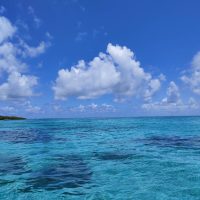Katsufumi Sato, Yoko Mitani, Michael F. Cameron, Donald B. Siniff, Yasuhiko Naito.
Journal of Experimental Biology 206: 1461-1470 (2003)
要旨:肺呼吸を行う動物は,潜水の間,体内に蓄積した酸素をエネルギーに変換することによって運動している.このため,餌の生息する深度まで潜り,餌を探して追跡し,捕獲するという一連の採餌行動は,限られた酸素を有効に利用して,効率よくおこなわれていることが予想される.そこで本研究では,深い潜水を日常的に行っているウェッデルアザラシが,どのように酸素消費量を節約しているのか,加速度データロガーを用いて明らかにした.
本研究で用いたデータロガーは加速度センサーを搭載している.加速度センサーは,アザラシの動きをモニタリングすることが可能であり,たとえばアザラシがヒレを動かして泳いでいるか,それとも動かすことなくグライディングしているかを判別することが可能である.アザラシの潜水行動を痩せている個体と太っている個体で比較したところ,痩せていて海水よりも密度の重い個体は,潜降している間,負の浮力を用いることにより,ヒレを動かさず石のように落ちていくグライディング泳法を用いていた.これに対し,密度の小さい脂肪を多く持っている太った個体は,数回ヒレを動かして泳いだ後にグライディングする泳法を繰り返していた.グライディング泳法を用いて潜降していた個体は,ヒレを動かして潜降していた個体よりも水面に滞在して息を整える時間が短く,潜水中に消費した酸素がより少ないことが考えられた.ヒレを動かすには運動エネルギーが必要であることから,グライディング泳法を用いている個体の方が,効率よく潜水していることが示唆された.
ABSTRACT: Aquatic animals use a variety of strategies to reduce the energetic cost of locomotion. Efficient locomotion is particularly important for breath-holding divers because high levels of exercise may quickly deplete oxygen
reserves, leading to the termination of a dive. We investigated the swimming behavior of eight adult Weddell seals, which are proficient divers, in McMurdo Sound, Antarctica. A newly developed data logger was attached to free-ranging females at their own breeding sites to record swimming speed, depth, two-dimensional accelerations (stroke frequency and body angle) and temperature. All seals conducted multiple deep dives (the mean dive depth range for each animal was 223.3±66.5–297.9±164.7·m). Prolonged gliding while descending was observed with thinner females (N=5 seals). But the fatter females (N=3 seals) exhibited only swim-and-glide swimming, characterized by intermittent stroking and fluctuating swim speed, throughout their descent and ascent. The body angles of four of the seals were restricted to less than 30° by the location of breathing holes in the ice and the slope of local bathymetric features. Of these four, the three fatter seals adopted the stroke-and-glide method while the other thinner seal descended with prolonged periods of gliding. Prolonged gliding seems to be a more efficient method for locomotion because the surface time between dives of gliding seals was significantly less than that of stroking animals, despite their same stroke frequencies.
Key words: acceleration data logger, body angle, stroke frequency, prolonged glide, stroke-and-glide, Weddell seal, Leptonychotes weddellii.





